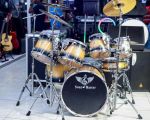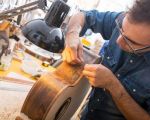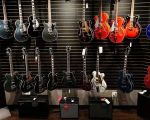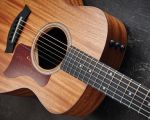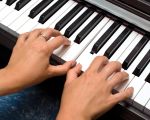What Instruments Are Used in Tejano Music? Exploring the Essential Sounds
- 1. The Accordion: Heart of Tejano Music
- 2. Brass Instruments: Trumpets and Saxophones
- 3. Guitar and Bass: The Backbone of the Rhythm
- 4. Drums and Percussion: Adding the Beat
- 5. The Historical Evolution of Tejano Music Instruments
1. The Accordion: Heart of Tejano Music
Tejano music, often referred to as Tex-Mex music, has deep roots in both Mexican and American traditions. Among the most iconic instruments that define its sound is the accordion. Introduced by German and Czech immigrants in the 19th century, the accordion became central to Tejano music by adding a rich, melodic layer that would become its hallmark. The unique sound of the accordion brings both a sense of nostalgia and vitality, which is why it's often regarded as the heart of the genre.
In Tejano bands, the accordion is often played by the lead musician, guiding the melody while working in tandem with other instruments like the trumpet and saxophone to create a harmonious, upbeat rhythm. Some of the most famous Tejano musicians, such as Flaco Jiménez, are known for their masterful accordion playing, showcasing its significance within the genre. The distinctively bright, bouncy sound of the accordion makes it instantly recognizable in any Tejano song, cementing its place as a key instrument.
2. Brass Instruments: Trumpets and Saxophones
Brass instruments, particularly trumpets and saxophones, are another vital component in the sound of Tejano music. While Tejano has roots in folk and traditional Mexican music, brass instruments brought a more lively and energetic feel to the genre, which was further enhanced during the rise of the Big Band era. These instruments have become integral to Tejano orchestras, helping to create a vibrant and celebratory atmosphere that has become characteristic of the genre.
In particular, the trumpet plays a major role in providing high-energy, sharp melodies that complement the accordion and other stringed instruments. The saxophone, on the other hand, adds a smoother, richer layer of sound. When combined, these brass instruments provide the necessary punch and color that makes Tejano music so irresistible. As Tejano evolved, these instruments were fused with jazz, rock, and other influences, further shaping the music’s complex and dynamic sound.
3. Guitar and Bass: The Backbone of the Rhythm
While the accordion and brass instruments capture much of the spotlight, the guitar and bass are the backbone of Tejano rhythm. The guitar, whether acoustic or electric, is often used to play the characteristic ranchera or corrido rhythm that Tejano music is known for. These rhythms lay the foundation for the melodies played by the accordion and the brass instruments.
The bass guitar adds depth to the sound, providing a steady foundation upon which the rest of the band builds. Its deep, resonating notes complement the upbeat nature of the rhythm, allowing the melody to shine through while still maintaining a cohesive sound. The fusion of electric guitar with traditional sounds has also led to the evolution of the genre, particularly in the Tejano Moderno movement, where rock and pop influences are prevalent. This blending of traditional and modern elements has made Tejano a continuously evolving genre.
4. Drums and Percussion: Adding the Beat
Drums and percussion play a crucial role in shaping the rhythm and overall energy of Tejano music. The steady beats of the drums and the various percussion instruments, such as the bongos, congas, and timbales, keep the music driving forward. These instruments add a layer of excitement, giving the music its signature bounce and infectious rhythm.
The drummer in a Tejano band is often responsible for maintaining the groove, while the percussionists add texture and syncopation to the rhythm section. Whether it’s a slow, soulful ballad or an upbeat dance tune, the drums and percussion provide the energy needed to keep the audience moving. The influence of Latin rhythms is particularly evident in the percussion section, drawing from traditional Mexican and Caribbean sounds that have become integral to Tejano music.
5. The Historical Evolution of Tejano Music Instruments
The instruments used in Tejano music have undergone significant evolution over the years, largely influenced by historical events and cultural shifts. Initially, Tejano music was shaped by Mexican folk traditions and the sounds of early settlers in Texas. Over time, the influx of European instruments, such as the accordion and brass instruments, led to the modern sound we know today. Additionally, as the genre crossed over into mainstream American culture, influences from jazz, rock, and even country music began to shape Tejano music.
As Tejano music grew in popularity, it became a platform for cultural expression, not only for Mexican-American communities but also for the broader Latinx culture. Tejano bands began experimenting with new instruments and styles, blending old and new to create a sound that was fresh, vibrant, and reflective of contemporary tastes. This innovation and adaptation ensured that Tejano music remained relevant and exciting, even as it celebrated its rich cultural heritage.
From the early days of traditional conjunto music to the vibrant sounds of modern Tejano, the instruments that define the genre have always reflected the diverse influences that have shaped it. Today, Tejano continues to evolve, embracing new technology, instruments, and styles, ensuring that it remains a beloved genre for generations to come.

